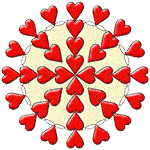 |
 Chrysocolla Teardrop cabochon is perfect for the pendant I had in mind! Thank-you (Submitted by: Lola Micheletti-Koury on December 02, 2015) Chrysocolla Teardrop cabochon is perfect for the pendant I had in mind! Thank-you (Submitted by: Lola Micheletti-Koury on December 02, 2015) |  |  |  I'm not even sure this was actual chrysocolla, put it's still pretty! (Submitted by: Carissa Humphries on April 26, 2010) I'm not even sure this was actual chrysocolla, put it's still pretty! (Submitted by: Carissa Humphries on April 26, 2010) |  |  | I would be interested to know when chrysocolla, becomes transparent blue chrysocolla, and then again when does transparent blue chrysocolla become gem cilica? Could you please help educate me, sincerely krofly.
Keith. If you would like to email me I would be most greatful for any advice you could offer on knowing how to decipher the differences so I will be able to price my findings accordingly. (Submitted by: krofly on April 26, 2010) |  | Chrysocolla itself is a fairly common mineral. It normally grows with other copper bearing minerals like Malachite, Shattuckite, and Cuprite. Pure Chrysocolla is normally too soft and crumbly by itself to be carved, tumbled or shaped. The other minerals help to stabilize the Chrysocolla, which is why you see cabochons and other shaped pieces that are a combination of Chrysocolla, Malachite, Cuprite, etc.
The term "Gem Silica" is more of a marketing name than anything. You will find that it is not recognized by the IMA. Gem Silica is really just a fancy name for Chrysocolla Quartz (when Chrysocolla is intermixed with, impregnated by, or encrusted by quartz). I was always taught that Gem Silica refers to a deposit of pure Chrysocolla that is encased in chalcedony, a silicon dioxide. Since the Chrysocolla is pure, the color is a gorgeous bright to deep teal blue.
Not all Chrysocolla will "turn into" Gem Silica. There are a number of factors that must occur. In fact, only a very, very small amount of Gem Silica is available at any given time. Gem Silica is only found in extremely small pockets of material and once mined out of that small pocket, there will be no more until the next small pocket is found. Because the supply is so limited, the demand goes up, and following suit, so does the price.
So, if you have bright blue, pure Chrysocolla encased in a silicon dioxide (quartz, chalcedony) that looks super high grade and gemmy, chances are, you have Gem Silica.
I hope this has been helpful!
with love and crystal blessings,
Kristi (Submitted by: Kristi on April 27, 2010) |  |  |
|


